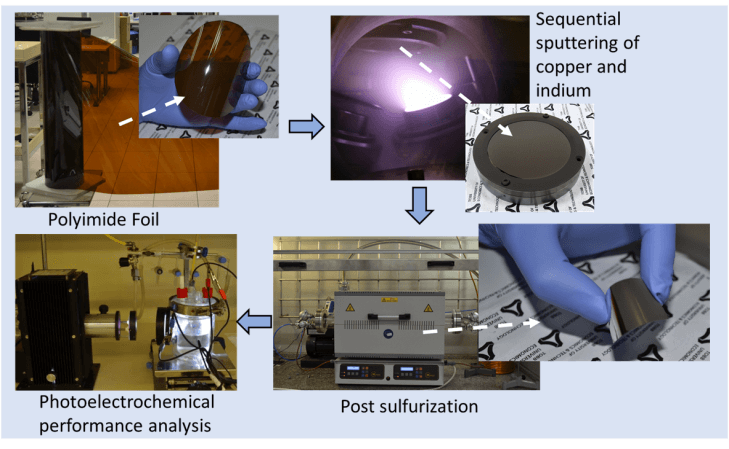
Nazrin Abdullayeva
TOBB University of Economics and Technology, Turkey
Title: Copper-Indium-Sulfide Based Flexible Electrodes for Solar Water Splitting
Biography
Biography: Nazrin Abdullayeva
Abstract
The multinary semiconductors have been counted as potential photovoltaic materials for thin film solar cell applications. Among these materials, ternary copper indium sulfide (CIS) thin films with a direct band gap of 1.5 eV match well with the solar spectrum. Moreover, high absorption coefficient, about 104 cm-1, of CIS makes it a promising candidate for utilization as an absorber layer into photovoltaic systems. CIS has a high resistivity to radiation and is also an environmentally friendly compound. Various synthesis techniques, such as chemical vapor deposition, electrodeposition, spray pyrolysis, rapid thermal processing and sputtering for CIS thin films have been previously reported. Sputtering technique, in comparison to others listed above, provides a more homogeneous and uniform film deposition. Moreover, this technique is highly suitable for mass productions of thin film photovoltaics. In this study, copper-indium-sulfide thin films at various stoichiometries are prepared by sequential magnetron sputtering of copper and indium targets followed by solid-state sulfurization process on flexible polyimide (Upilex®) foils. In order to control the stoichiometry, we kept constant the thickness of the indium while the thickness of the copper layer was tailored via controlling the deposition time. The morphological and structural properties have been investigated via SEM, EDX, XRD and Raman. The photoelectrochemical performance of the CIS electrodes has been analyzed in the conventional three-electrode cell with quartz window. Current density of the CIS electrodes as a function of applied potential versus the Ag/AgCl reference electrode has been analyzed using Gamry 750 Potentiostat/Galvanostat/ZRA system in the range of -1 to 0 V. It has been observed that all samples were homogeneous over large areas indicating the applicability of the sequential sputter followed by post sulfurization process introduced here in solar hydrogen generation systems. Besides, the responsivity of the samples increased with decreasing the copper amount in the films. Although the current density of the copper rich CIS electrodes was superior to the that of copper poor CIS electrodes, better photo-response of the copper poor CIS electrodes resulted with higher photoconversion efficiency for copper poor samples.
Image :

Figure 1. Process sequence of the flexible copper-indium-sulfide electrodes for solar water splitting
Recent Publications :
1. Aydin E, Sankir N D (2017) Photovoltaic Performance and Impedance Spectroscopy Analysis of CuInS2 Thin Film Solar Cells Deposited on Polyimide Foil via Spray Pyrolysis. International Journal of Electrochemical Science 12:9626-9639.
2. Yolacan D, Sankir N D (2017) Enhanced photoelectrochemical and photocatalytic properties of 3D-hierarchical ZnO nanostructures. Journal of Alloys and Compounds 726:474-483.
3. Sankir M, Semiz L, Sankir N D (2015) Catalyst free hydrogen generation from directly disulfonated poly(arylene ether sulfone) copolymer membranes. Journal of Membrane Science 496:318324.
4. Sankir N D, Aydin E, Ugur E, Sankir M (2015) Non-Toxic and Environmentally Friendly Route for Preparation of Copper Indium Sulfide Based Thin Film Solar Cells. Journal of Alloys and Compounds 640:468-474.
